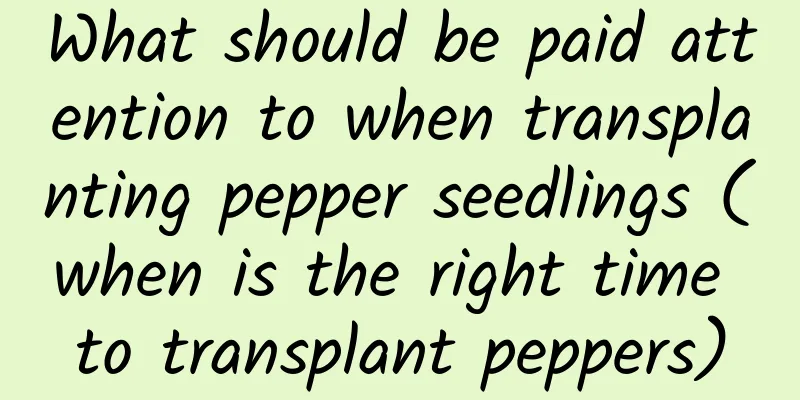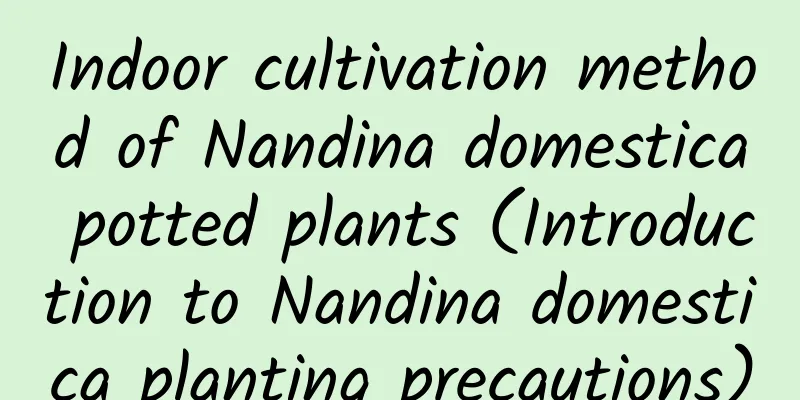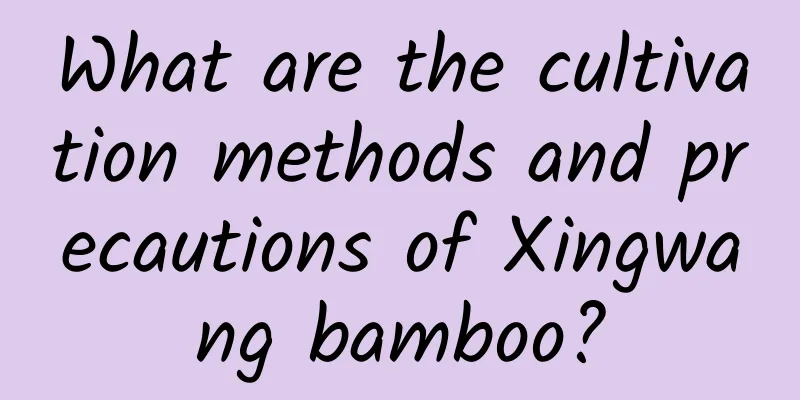What should be paid attention to when transplanting pepper seedlings (when is the right time to transplant peppers)

|
Peppers not only have a long growth cycle but also grow indefinitely, constantly budding, blooming, and bearing fruit. If they bear fruit too early when planted in an open-air vegetable garden, they must be transplanted. ① Planting timeOpen-air vegetable gardens are generally planted in spring and summer. If the seeds are planted early, the harvest period will be long and the economic benefits will be high, while if the seeds are planted late, the harvest period will be short and the economic benefits will be low . The natural temperature in spring is unstable, so the method of raising seedlings first and then transplanting can be used to harvest early. It is also suitable for other vegetables such as tomatoes, loofahs, cucumbers, beans, leeks, etc. ② Seedling cultivationSeedling transplanting is an important model for increasing production in the current planting industry, with the advantages of small investment, low cost and high economic benefits. In order to increase pepper yield, a good foundation must be laid during the seedling stage to increase the probability of producing more high-quality seedlings and reduce the probability of producing low-quality seedlings. Strictly control the temperature and humidity to prevent diseases and pests in the seedlings. The process from germination to transplanting is a long and careful management process. ③TransplantationBefore transplanting peppers, preparation work needs to be done, such as fertilizing and making beds, watering the seedbed, sterilizing and pest controlling, etc., which are all important processes. First, prepare an appropriate amount of fermented organic fertilizer, apply it to the planting site, deep plow and mix it evenly with the soil . Ultraviolet light sterilization and disinfection can reduce the incidence of diseases and pests, increase water and fertilizer retention effects, and improve the survival rate of pepper seedlings. It will take 30 to 50 days for the seedlings to grow to 20 cm in height on the nursery bed and then they can be transplanted . This period is the most critical period for transplanting. Although peppers are easy to survive, it should not be too late. If the pepper seedlings are transplanted too late, it will affect the flowering and fruiting time, and also reduce the yield. Spraying and disinfecting the seedbed the day before transplanting to improve drought resistance and preventing the roots from separating from the soil during transplanting are important links in improving the survival rate. ④Water and fertilizer managementPeppers are vegetables that like fertilizer very much. Before transplanting, you should choose fermented organic fertilizer as base fertilizer, and continue to apply fertilizer during the growing period. Preparations should be made in open-air vegetable gardens where watering is inconvenient. Apply topdressing before it rains, and loosen the soil and water the field after transplanting to promote seedling growth and increase survival rate. |
Recommend
How to trim roses so that they can cover the entire wall?
Rose is a very beautiful garden flower with the c...
What are the effects of golden fruit (Solanum ovata)
The ornamental effect of golden fruit The golden ...
How to grow purple grass
1. Maintenance methods 1. Temperature: 20 to 30 d...
Things to note when pruning spider plants, and when is the right season to prune them?
1. Pruning precautions 1. Weather: Pruning should...
When is the best time to plant okra?
Nowadays, people pay more attention to health and...
Can green jade chrysanthemum be cultivated hydroponically?
Can green jade chrysanthemum be cultivated hydrop...
Rooting method of rose branches soaked in water
1. Time Selection It is best to choose spring and...
How to grow passion fruit on the balcony
Preparation of Utensils Passion fruit cannot be p...
Fertilization tips for Podocarpus
Fertilization method When cultivating Podocarpus,...
Thyme cultivation methods and precautions
Thyme is a very easy plant to grow. The plant pre...
You don’t need to buy Sansevieria, just pick a “leaf” and stick it in the soil, and you will grow a green potted plant in 30 days!
Tiger Skin Orchid is a common green plant in hous...
How does the small hibiscus survive the winter?
1. Choose the right environment for maintenance H...
Giving a flower a melon is like giving it a shot of stimulant, and it can't stop blooming!
Give the flowers some enzyme water and the fragra...
How to grow potted chrysanthemums and make them bloom more?
1. Potted plant maintenance methods 1. Soil: When...
How to grow the maidenhair fern more vigorously?
The maidenhair fern , also known as wire grass, h...









